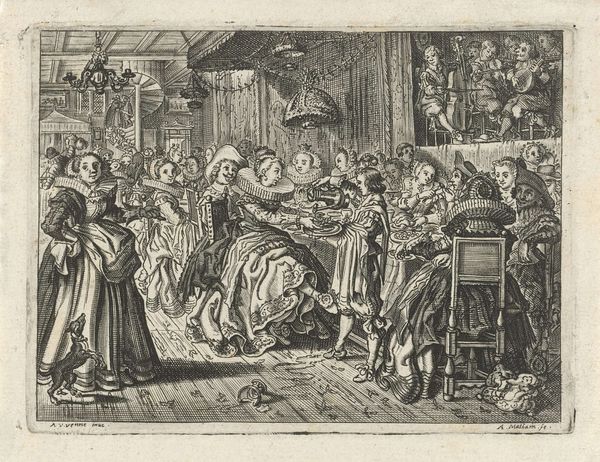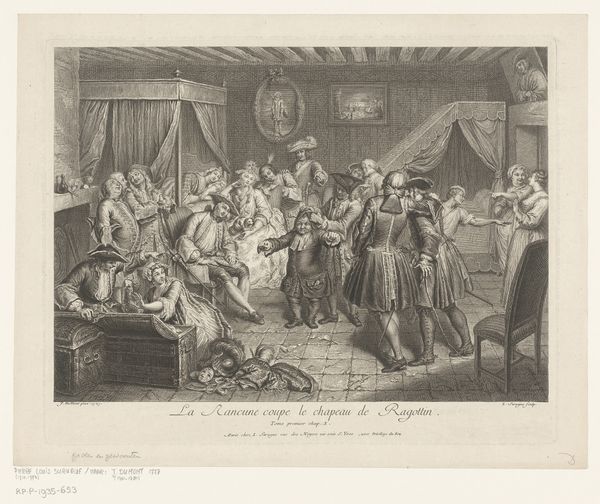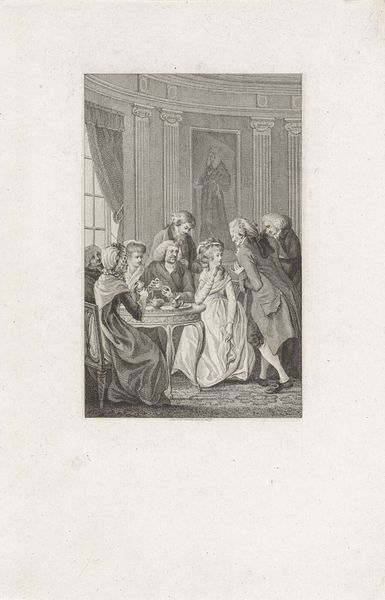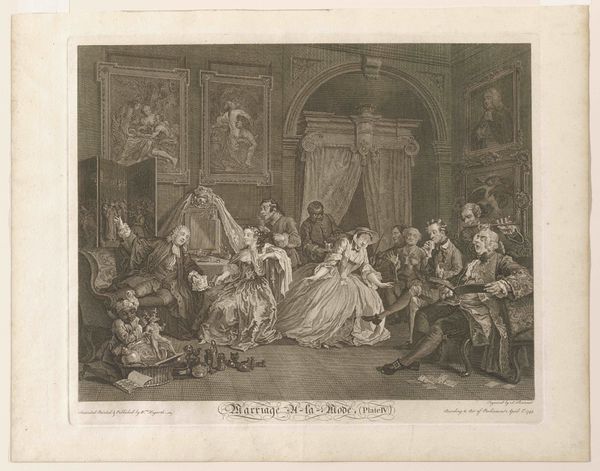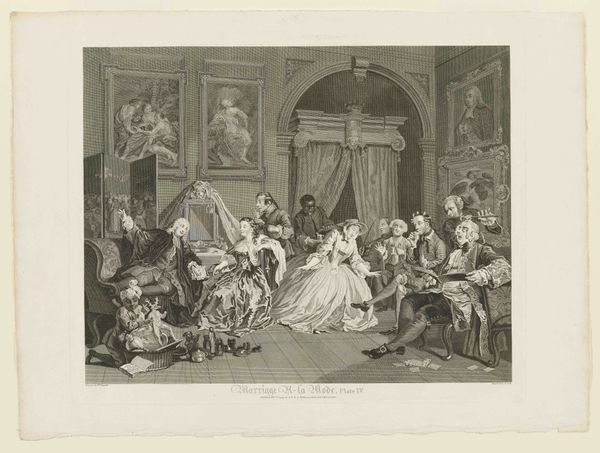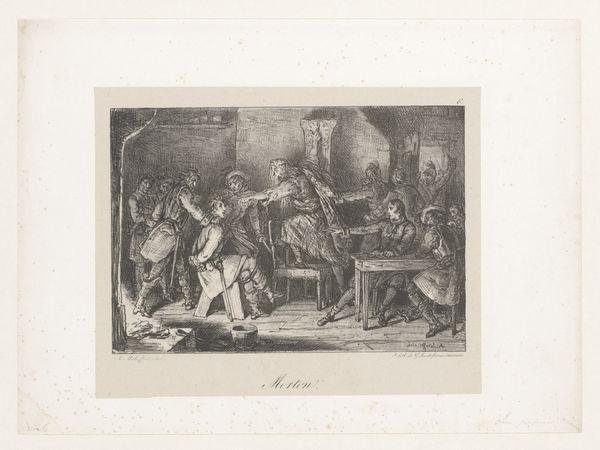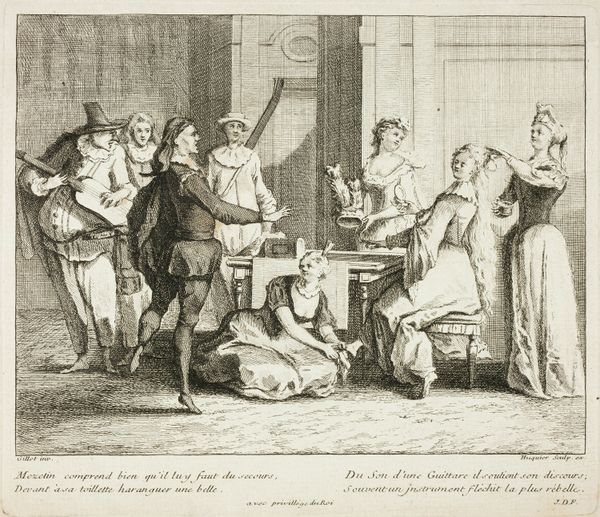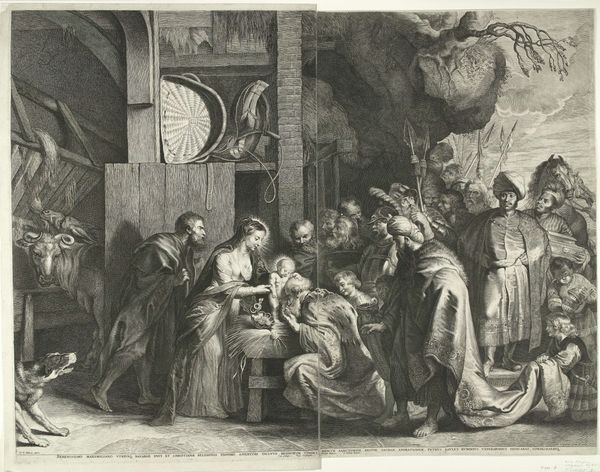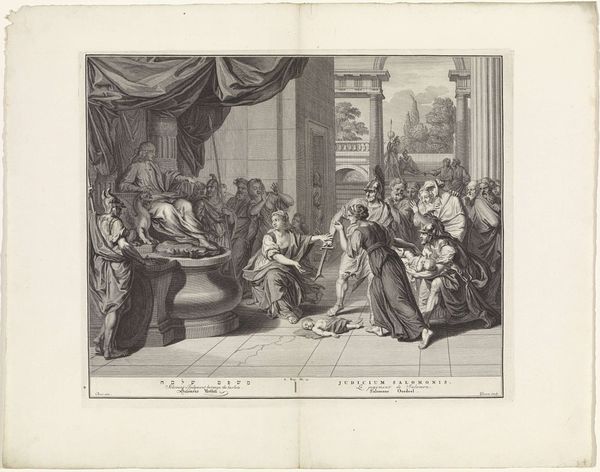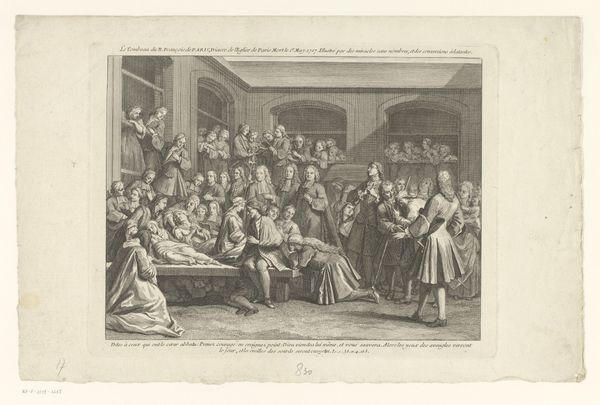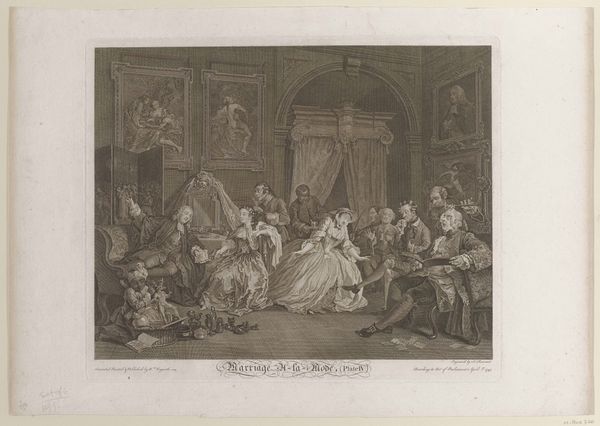
print, engraving
#
baroque
# print
#
genre-painting
#
history-painting
#
engraving
Dimensions: height 225 mm, width 275 mm
Copyright: Rijks Museum: Open Domain
Editor: This is “Birth of John the Baptist” after 1595, a print by Cornelis Galle I. It feels incredibly busy, so many figures in a single space! I'm immediately drawn to the contrast between the shadowy corners and the brightly lit central scene of the birth. How do you interpret this work, looking at the arrangement of figures? Curator: Notice how the engraving leads your eye from the darker corners toward that illuminated center. But consider also what symbols lie there: women attending to the newborn and Elisabeth, clearly exhausted in bed. The women around the bathing child signify purification but also community celebration. Do you see the man writing the name? Editor: Yes, it's like two separate events occurring within one image, baptism and the naming. So, beyond the immediate story, is Galle conveying other cultural ideas? Curator: Indeed. Galle plays with symbols deeply embedded in cultural memory. Naming rituals carried immense importance, dictating destiny and familial ties. And look closer still – how does he subtly shift the light toward these key moments of societal formation? Think of the stories that this composition repeats from centuries of similar scenes, rendered visible here. The ritual power within domestic spaces becomes apparent. Editor: That's fascinating. Seeing it as less a simple scene and more an intersection of social, familial and even divine action really shifts my understanding. Curator: Precisely! These carefully positioned figures become more than characters; they become symbols. And considering them that way allows us to better understand their timeless meaning. Editor: I’ll never see "genre-painting" the same way! I really learned a lot about symbols carrying weight through time and space, and what we can understand from this. Curator: Agreed. Art unlocks historical understanding through careful study. Looking is the first step!
Comments
No comments
Be the first to comment and join the conversation on the ultimate creative platform.
